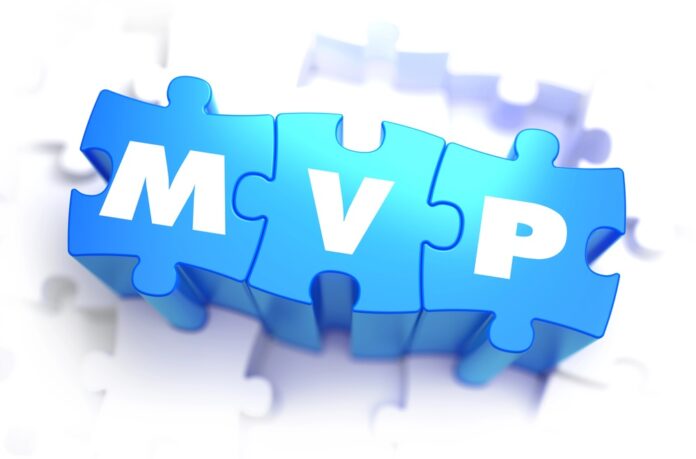Key Takeaways
- The importance of a clear vision and strategy for MVP success.
- Balancing development speed and product quality is crucial.
- Continuous feedback and iteration shape the final product.
Why Start with an MVP?
Launching a project focusing on MVP development provides a strategic advantage in today’s dynamic digital landscape. This approach allows businesses to introduce a new product idea while conserving critical resources. By zeroing in on essential features that solve users’ pressing needs, companies can garner valuable insights without committing to a product yet to prove its potential. Additionally, MVPs serve as a trial ground to test market reception and viability before large-scale deployment. Utilizing an MVP reduces financial risks and offers insights into user behavior and expectations. This foresight is crucial as companies can decide whether to pivot, persevere, or even pivot the original idea to better cater to market demands. By doing so, MVPs foster a faster, more economical, and more effective go-to-market strategy, thus ensuring resources are directed to the most promising avenues.
Understanding the Core Features
The backbone of any successful MVP lies in the meticulous selection of its core features. These components are carefully chosen to showcase the product’s intrinsic value by directly addressing critical user problems. It is essential not to overload the MVP with features but to fine-tune the product’s functionality to highlight its unique selling propositions effectively. Determining which features to prioritize involves a deep dive into user research, often necessitating iterations of user feedback sessions and prototyping. The main objective is to develop an engaging product experience that addresses a problem or noticeably improves the user’s life, ensuring it is essential from the beginning. By setting a narrow scope yet delivering design-focused and high-quality content, the product stands a higher success rate in capturing initial user interest and collecting actionable feedback.
Maintaining a Lean Development Process
Incorporating a lean development process is critical to the efficiency and success of MVP projects. Lean methodology emphasizes maximizing customer value while minimizing waste, fostering a culture of quick iterations and continuous improvement. By embracing this approach, teams can rapidly develop, measure, and learn, allowing them to refine the product continuously based on real-time data rather than assumptions. Lean practices help streamline workflows, reduce unnecessary steps, and focus every development phase on adding value to the user. This approach enables teams to respond nimbly to feedback and pivot swiftly, aligning with their strategic goals. Adapting without compromising product integrity or quality is a significant competitive edge in a market where time is essential.
Gathering and Analyzing User Feedback
An MVP’s trajectory hinges on obtaining relevant user feedback. By engaging users, businesses can uncover insights vital for making informed decisions about the product’s evolution. Direct interactions such as interviews, surveys, or analysis through digital analytics provide a clearer picture of user expectations and experiences. Analyzing this data allows developers to decipher trends and detect friction points in the user journey. Such feedback loops are indispensable for prioritizing which product adjustments will yield the highest return on investment, whether refining specific features or adjusting marketing strategies. In doing so, the MVP can progressively evolve to better-fit market demands and enhance user satisfaction comprehensively over time.
Continuous Iteration for Enhanced Performance
A core tenet of MVP development is continual iteration. It serves as a mechanism to refine the product based on user feedback and innovative trends. Each iteration allows the product to adapt, grow, and solidify its market position by aligning closely with consumer needs and technological advancements. This iterative cycle fosters innovation by providing a framework where creatives and developers synergize to address challenges and explore newfound opportunities. It gradually allows the MVP to build robustness and versatility, increasing its readiness for full-scale market entry and user acceptance. Ultimately, this method ensures that the product remains relevant and can evolve alongside user expectations.
The Role of User Experience (UX) in MVP Development
User experience is a feature of modern products and a defining criterion for their success. Ensuring a seamless and intuitive UX in an MVP boosts the likelihood of user retention and satisfaction. Users must find the interface easy to navigate and aesthetically pleasing; otherwise, the risk of abandonment increases.
UX design within MVPs necessitates attention to detail, including usability testing, UX personas, and customer journey maps to identify and eliminate pain points. By investing in an empathetic design approach, developers can ensure that their MVP resonates with users emotionally and functionally, enhancing long-term engagement.
Case Studies: Successful MVP Launches
Exploring past MVP launches illustrates the strategic execution of this approach. Learning from the strategies seen in various industries, like how leading brands have successfully launched new digital products, can offer profound insights into effective practices for MVPs. The commonalities in these successful case studies include a clear understanding of target users, a focused approach to solving specific problems, and the ability to implement quick changes based on feedback. These examples demonstrate how even well-known brands have used careful planning and execution to transition their MVPs into comprehensive, market-ready products.
Adopting Agile Methodologies
Agile methodologies align naturally with MVP development, emphasizing collaboration, flexibility, and iterative progress. These methodologies empower teams to adjust their work direction based on customer feedback and changing requirements, resulting in a continuously evolving product to meet user needs. In the tech industry, embracing agile methods allows for aligning product development efforts with real-time insights, helping teams deliver features that resonate with their target audiences. Industry professionals have discussed how implementing agile practices can boost team efficiency and produce products that quickly meet or surpass user expectations.
Find a Home-Based Business to Start-Up >>> Hundreds of Business Listings.















































